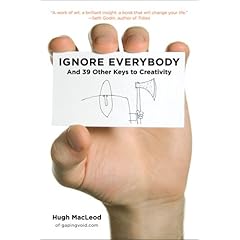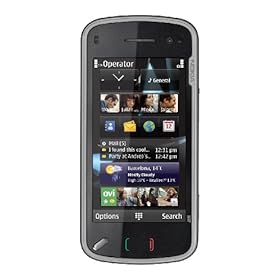 I've been following the growth of Hugh MacLeod through his blog, gaping void. I've always known Hugh as a guy that produces insightful blog posts and the guy that draws cartoons on the back of business cards. Hugh's drawings are cool and provocative and cause conversations; I have a number of them printed out in larger size and posted in my office to start conversations.
I've been following the growth of Hugh MacLeod through his blog, gaping void. I've always known Hugh as a guy that produces insightful blog posts and the guy that draws cartoons on the back of business cards. Hugh's drawings are cool and provocative and cause conversations; I have a number of them printed out in larger size and posted in my office to start conversations.Hugh took a blog post that he wrote entitled "How to be Creative" (also available as a ChangeThis Manifesto), expanded upon it, and turned it into a book. In effect, I had already read a good portion of his book. I was aware Hugh was writing a book because I read his blog and he posted all about it and I follow him on twitter and he's been tweeting about it.
Ignore Everybody is exactly what I expected (hoped) that it would be: unflitered, unpolished, full of cool cartoons, and totally worth reading. I actually downloaded it to my Kindle right before my flight yesterday and read it during the flight with some time to spare (so, yes, it's a quick read).
In reading the book it's clear that Hugh did not compromise much to his editors at the publisher; he made the book the way he wanted it. I like books and blogs and articles that I imagine sound like the author talks and Ignore Everybody strikes me as exactly that kind of book; I could imagine having conversations on the topics in the book with Hugh and the language coming out exactly the same.
 This book is not about marketing (though it will give you ideas). This book is not about becoming an artist (though it may inspire you to move along that trajectory). This book is not a tactical manual (it's most definitely not an ordered, step-by-step process). This book is about thinking big and embracing ideas (especially the scary ones) and changing your mindset. And it's about The Sex and Cash Theory, which explains that there are 2 kinds of jobs: the sexy, creative one and the one that pays the bills -- read the book for further definition and why this is dramatically important as you evaluate your current mindset.
This book is not about marketing (though it will give you ideas). This book is not about becoming an artist (though it may inspire you to move along that trajectory). This book is not a tactical manual (it's most definitely not an ordered, step-by-step process). This book is about thinking big and embracing ideas (especially the scary ones) and changing your mindset. And it's about The Sex and Cash Theory, which explains that there are 2 kinds of jobs: the sexy, creative one and the one that pays the bills -- read the book for further definition and why this is dramatically important as you evaluate your current mindset.This book will push you, hard, outside your envelope in a good way -- I hope that you are like me and you're willing to let it.
Link -- Kindle version
Link -- Hardback version
PS -- this is one of the better graphic-intensive business books to read on the Kindle. Probably due to the fact that all of the graphics are business card-size, which makes them just a little smaller than the width of the screen on a Kindle 2.





